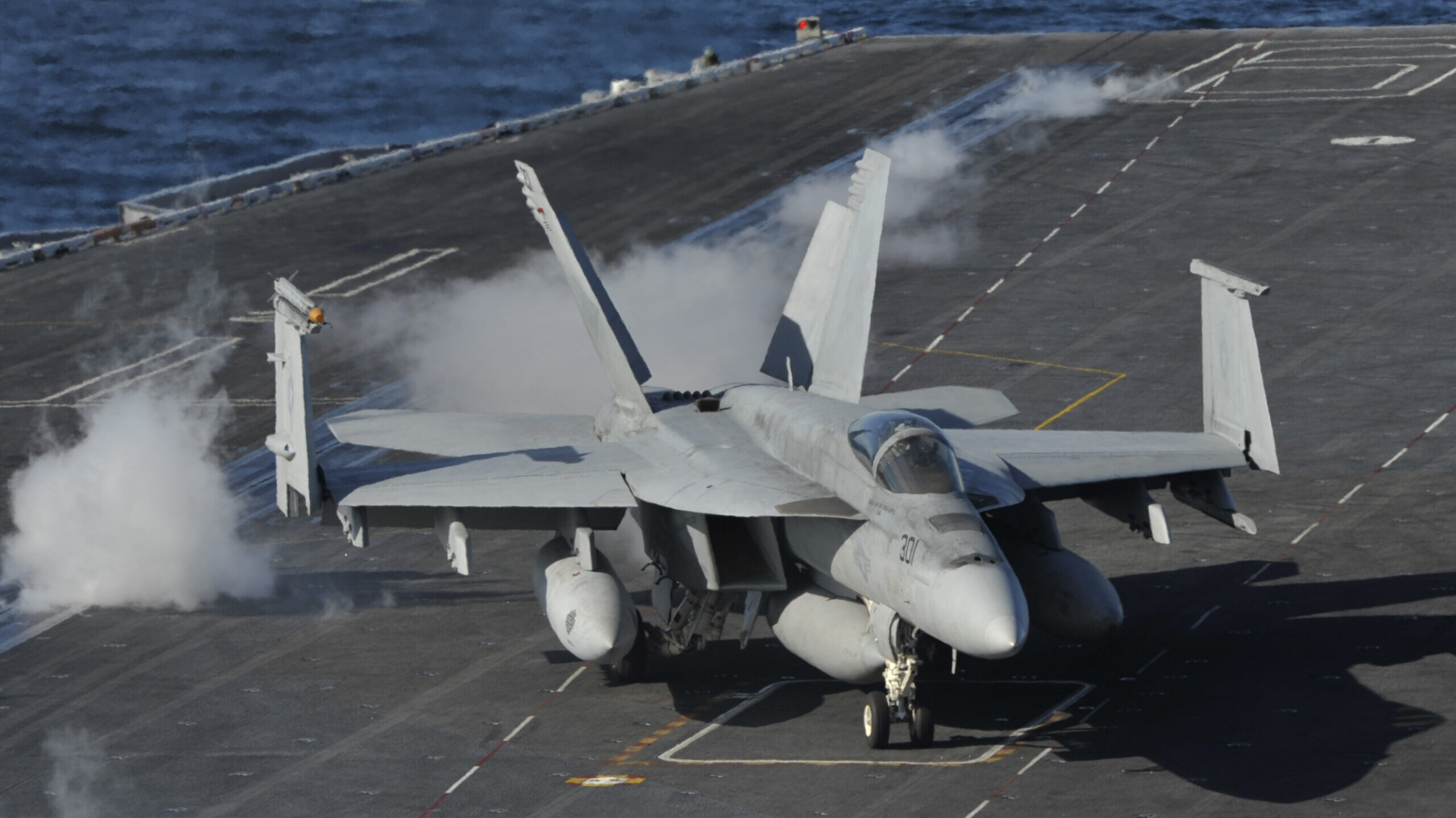
An F/A-18E Super Hornet stands by on the flight deck of the aircraft carrier USS Nimitz (CVN 68). (U.S. Navy photo by Seaman David Claypool/ Released)
WASHINGTON: The Navy has changed its projected date for when it will resolve its ongoing strike fighter shortfall — again.
During a congressional hearing with numerous uniformed and civilian Pentagon leaders, Rep. Donald Norcross, D-NJ, said the service now projects it will not resolve its shortfall until 2031. The congressman said the reason for the change was due to “unplanned reductions” in F-35 procurement as well as reduced inductions into the service’s modifications lines for F/A-18 Super Hornets.
That’s six years later than the timeline Chief of Naval Operations Adm. Michael Gilday personally told the same lawmakers during last year’s budget hearings.
But what was clearly irritating to both Norcross, and subcommittee ranking member Rep. Vicky Hartzler, R-Mo., during the hearing is that prior to Gilday’s statement, former Navy acquisition executive Hondo Geurts told the panel in 2019 that the shortfall would not be resolved until around 2030. In other words, the Navy gave Congress a timeline, claimed it could speed it up significantly, and now has pushed it back beyond its original projection.
Navy leadership during the hearing never discussed why the timeline was changed. A Navy spokesperson did not immediately respond to questions from Breaking Defense.
As House lawmakers drafted fiscal 2022’s defense and spending bills, Congress never appeared convinced the Navy’s math was fully baked. The plans the service laid out last year relied on successfully extending the service lives of Super Hornets at a high rate, adjusting the numbers for F-35C squadrons and purchasing some foreign aircraft that could be used for training, freeing up other planes for operational purposes.
During the hearing, Hartzler asked Rear Adm. Andrew Loiselle, director of air warfare requirements, what the Navy’s Super Hornet inventory would look like in the late 2020s, a time period where the service would only have one manufacturer for strike fighters and when Indo-Pacific Command once predicted China might make a move on Taiwan.
Loiselle said he could not give Hartzler a specific inventory number, but did say the Pentagon would be short 13 strike fighters in 2025, according to the Navy’s projections. He added that those numbers are recalculated monthly.
“Our fixed numbers of F/A-18s will not change in the future going forward,” Loiselle said. “What will change is the number of aircraft we do [service life modifications] on, which will give each of those remaining aircraft an additional 4,000 hours and 13 years of service life.”
The strike fighter shortfall has been a sensitive subject between the Pentagon and lawmakers in recent years in part because the Navy wants to shutdown the Super Hornet production line. Congress didn’t allow that to happen and added 12 planes to last year’s defense legislation.
Lawmakers’ unwillingness to allow a shutdown sparked provocative comments from Gilday during a major industry trade show last year, in which he told attendees to focus on delivering ships out of maintenance on time rather than lobbying for “aircraft we don’t need.”
During the hearing today, Rep. Rob Wittman, R-Va., asked Loiselle why the service was seeking relief from a legislative requirement that the Navy have 10 carrier air wings by 2025.
Loiselle responded that the service’s master aviation plan, which spans 10 years out, shows there are very few times in the near future when the Navy will have more than nine carriers available, due to a variety of reasons including some of those ships undergoing major overhauls.
Lockheed Martin projects potential $1 billion loss on classified program
Lockheed CFO Jay Malave said the company currently expects the program to become profitable on an annual basis around the 2028 timeframe.


























